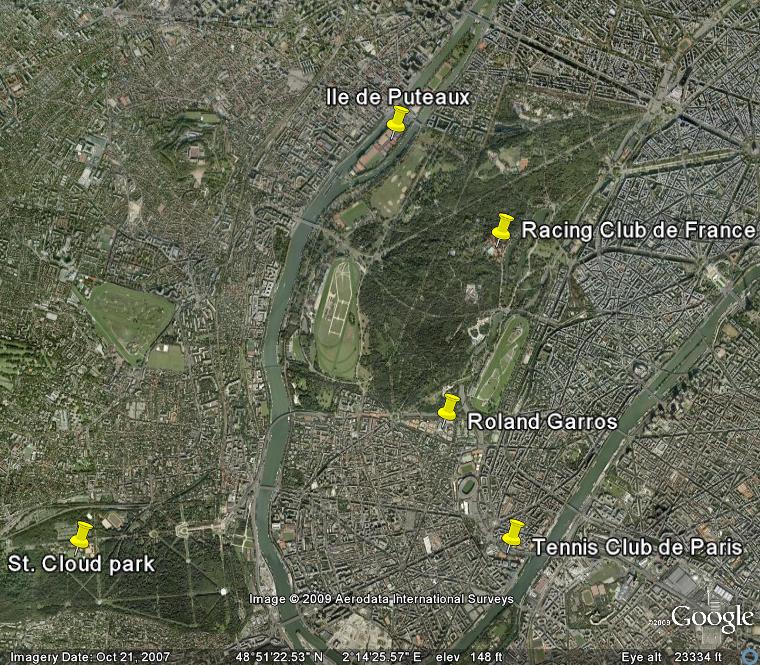And it's interesting, if Tilden himself thought that he was competing for the same title (the championship of France, like that of England or the U.S.), that we don't think of it the same way.
A lot of people do think of it the same way. Tilden referred to the (closed) French tournament as the championships of France. He calls the other tournament the "Hard Court Championship of the World", which is another way of saying the "World Hard Court Championship". Here he is, in his book "The Art of Lawn Tennis", describing the visit of the American contingent to the event in 1921:
The United States Lawn Tennis Association, following its policy of co-operation with the International Federation, decided to send a team to France and England for the championships. The personnel of the team was Mrs. Franklin L. [Molla] Mallory, Miss Edith Sigourney, Arnold W. Jones (boy champion of America, 1919), and myself. J.D.E. Jones, father of Arnold, himself a tennis player of renown, accompanied the team, as did Mr. Mallory.
The invading tennis players sailed May 12th [1921] on the Mauretania to Cherbourg and from there journeyed to Paris, where they engaged in the Hard Court Championship of the world.
The first week of the stay was devoted to practice on the courts at the Stade Français, St. Cloud, where the championship was held. The team were the guests of the Racing Club at a most delightful luncheon and shortly afterward dined as the guests of the Tennis Club of Paris.
The finals of the championship of France were held during our stay and, greatly to our surprise, A. [André] H. Gobert, the defending title holder, fell a victim to his old enemy, heat, and went down to defeat before Samazieuhl [Jean Samazeuilh]. The Hard Court championships of the world produced a series of the most sensational upsets in the history of the game, a series, I might add, that did much to allow me to win the event. Gobert lost to Nicholas Mishu in the first round. [Manuel] Alonzo, after defeating Samazieuhl [Samazeuilh], went down to defeat at hands of [William] Laurentz, who in turn collapsed to [Erik] Tegner. Fate pursued the winners, for Tegner was eliminated by [Jean] Washer [of Belgium], who came through to the final against me. Either Alonzo or Laurentz should have been finalists if the unexpected had not occurred, and either would have been a hard proposition for me, particularly in my condition. I had been taken ill on my arrival in Paris and was still far from well. However, Fortune smiled on me and I succeeded in defeating Washer 6-3, 6-3, 6-3.
Meanwhile the long awaited meeting between Mlle. Lenglen and Mrs. Mallory was at hand. Mrs. Mallory had come through one side of the tournament after a bitter battle with Mme. Billoutt (Mlle. Brocadies [Marguerite Broquedis]) in the semi-final.
Mlle. Lenglen had proceeded in her usual leisurely fashion to the finals with the loss of but two games.
What a meeting these two great players, Mrs. Mallory and Mlle. Lenglen, had! Every seat in the stands sold and every inch of standing room crowded! It was a marvellous match, both women playing great tennis. Mlle. Lenglen had consistently better depth and more patience. She out-manoeuvred the American champion and won 6-2, 6-3. The match was far closer than this one-sided score sounds. Every rally was long drawn out and bitterly contested, but the French girl had a slight superiority that brought her a well deserved victory.

